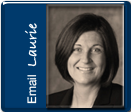 Generating income in retirement is one of the most common financial goals for retirees and soon to be retirees. The good news is that there are a variety of ways to “recreate your paycheck”. Retirement income might be visualized using a “Three Legged Stool”. The first two sources or legs of retirement income are generally social security and pensions (although fewer and fewer retirees are covered by a pension these days). The third leg for most retirees will come from personal investments (there is a potential fourth leg – part time work – but that’s for another day). It is this leg of the stool, the investment leg, that requires preparation, planning and analysis. The most effective plan for you depends on your individual circumstances, but here are some common methods for your consideration:
Generating income in retirement is one of the most common financial goals for retirees and soon to be retirees. The good news is that there are a variety of ways to “recreate your paycheck”. Retirement income might be visualized using a “Three Legged Stool”. The first two sources or legs of retirement income are generally social security and pensions (although fewer and fewer retirees are covered by a pension these days). The third leg for most retirees will come from personal investments (there is a potential fourth leg – part time work – but that’s for another day). It is this leg of the stool, the investment leg, that requires preparation, planning and analysis. The most effective plan for you depends on your individual circumstances, but here are some common methods for your consideration:
- Dividends and Interest
- 3 – 5 Year Income Cushion or Bucket
- The Annuity Cushion
- Systematic Withdrawal or Total Return Approach
Dividends & Interest:
Usually a balanced portfolio is constructed so your investment income – dividends and interest – is sufficient to meet your living expenses. Principal is used only for major discretionary capital purchases. This method is used only when there is sufficient investment capital available to meet your income need after social security and pension, if any.
3-5 Year Income Cushion or Bucket Approach:
This method might be appropriate when your investment portfolio is not large enough to generate sufficient dividends and interest. Preferably 5 (but no less than 3) years of your income shortfall is held in lower risk fixed income investments and are available as needed. The balance of the portfolio is usually invested in a balanced portfolio. The Income Cushion or Bucket is replenished periodically. For example, if the stock market is up, liquidate sufficient stock to maintain the 3-5 year cushion. If stock market is down, draw on the fixed income cushion while you anticipate the market to recover. If fixed income is exhausted, review your income requirements, which may lead to at least a temporary reduction in income.
The Annuity Cushion
This method is very similar to the 3-5 year income cushion. A portion of the fixed income portfolio is placed into a fixed-period immediate annuity with at least a 5-year income stream. This method might work well when a bridge is needed to a future income stream such as social security or pension.
Systematic Withdrawal or Total Return Approach
Consider this method again if your portfolio does not generate sufficient interest and dividends to meet your income shortfall. Generally speaking, a balanced or equity-tilted portfolio in which the income shortfall (after interest income) is met at least partially from equity withdrawals. Lastly, set a reasonably conservative systematic withdrawal rate, which studies suggest near 4% of the initial portfolio value adjusted annually for inflation.
After helping retirees for the last 27 years create workable retirement income, we have found that many times one of the above methods (and even a combination) works in re-creating your paycheck in retirement. The key is to provide a strong foundation – or in this case – a sturdy stool.
Any information is not a complete summary or statement of all available data necessary for making an investment decision and does not constitute a recommendation. Any opinions are those of Center for Financial Planning, Inc.,  and not necessarily those of RJFS or Raymond James. Investments mentioned may not be suitable for all investors. Dividends are not guaranteed and must be authorized by the company’s board of directors. There is an inverse relationship between interest rate movements and fixed income prices. Generally, when interest rates rise, fixed income prices fall and when interest rates fall, fixed income prices generally rise. Investing involves risk and you may incur a profit or loss regardless of strategy selected.
and not necessarily those of RJFS or Raymond James. Investments mentioned may not be suitable for all investors. Dividends are not guaranteed and must be authorized by the company’s board of directors. There is an inverse relationship between interest rate movements and fixed income prices. Generally, when interest rates rise, fixed income prices fall and when interest rates fall, fixed income prices generally rise. Investing involves risk and you may incur a profit or loss regardless of strategy selected.












